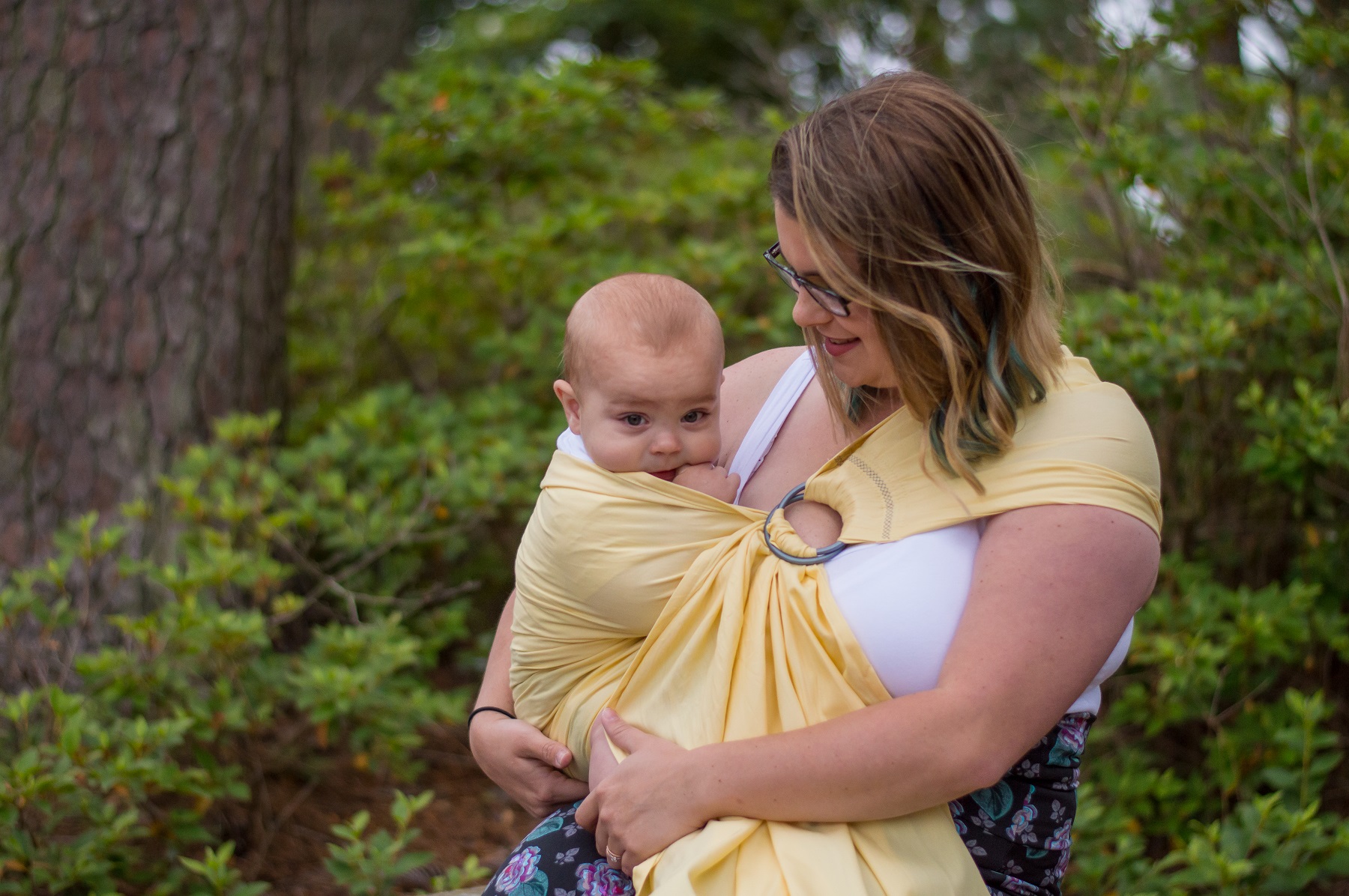Things to know before you use any carrierWarnings and precautions
Like riding a bicycle, you need to observe safety rules while using a baby carrier, but don’t let that keep you from enjoying the ride! A baby sling is a fantastic tool that can help you greatly in daily life.
- The sling is made for carrying children from their full-term birth to 35 pounds. However, your body may have different limitations.
- Don’t use a sling to carry a child you wouldn't carry in your arms. Any carrier should hold your baby the way you would hold him in your arms. Don’t use the ring sling to put your baby in a position you wouldn't hold him in your arms.
- Don’t place more than one child in this sling, or wear more than one sling at the same time.
- The fabric should always be snug against your child's body, and he should not slump or slide around in the sling. Examine your sling before each use for wear and tear. Do not use if it is excessively worn or torn.
- Do not use the sling near open flames or high heat, as the fabric is not fire-retardant or -resistant; nor is your baby!
- A baby carrier should NEVER be used as a child safety seat. This sling may not be used in lieu of a carseat in any moving vehicle or equipment.
- NEVER cover your child's face with the sling fabric, or allow his nose or mouth to press into your body.
- Newborns and small infants are at risk for positional asphyxia. The weight of your child's head should be supported, but his neck should be mostly straight at all times. If your child is grunting or seems distressed, reposition him.
- Infants with respiratory conditions, either chronic or acute, can face additional risks in a sling. Follow all instructions and consult your doctor before using a sling with a baby with health conditions. Be extra vigilant if using a sling with a sick baby.
- Except when the baby is nursing, you should be able to kiss the top of his head.
- Do not leave the baby wrapped in the sling when you’re not wearing it. If you put the baby down to sleep after wearing, be sure they cannot become entangled in the fabric. Remove the sling from the baby’s sleep surface.
- Be aware of the sling tail position: with a long sling, tuck the tail into the body of the sling, or wrap it around the rings so you do not trip over or become entangled in it.
- Do not use your sling during any activities that may injure your child, such as while exercising, bicycling, running, jumping, skiing, swimming,climbing, etc.
- Do not use when you are drowsy, sleeping, suffering from an illness or condition that impairs balance, taking medication that causes dizziness, or when using crutches.
- Carrying a baby in this sling requires diligence on the part of the caregiver. Failure to pay attention can lead to falls or failure to notice distress.
- Be aware that your center of balance is affected when wearing your sling.
- Be aware of objects and/or people around you that can cause harm while you are wearing the baby in your sling.
- If using the sling to aid you in carrying a baby while nursing, always reposition the baby after they are finished, and be sure you have a clear, unobstructed view of the baby’s nose and mouth at all times.
- If the baby falls asleep when nursing, you must bring the baby back up to an upright carry or a reclined position where their face is away from the breast.
- Do not use the sling’s tail to cover your baby’s face or obstruct your view.

